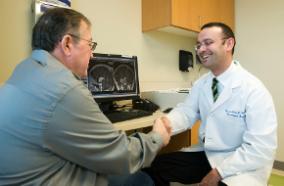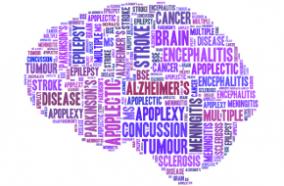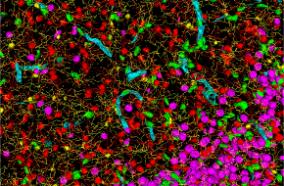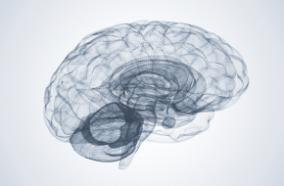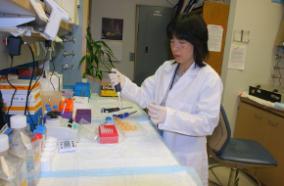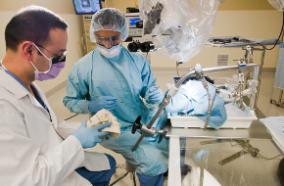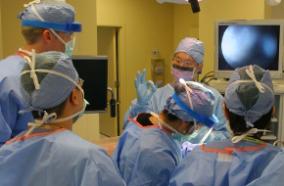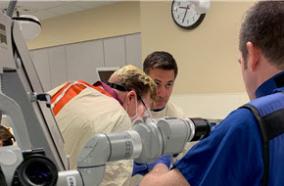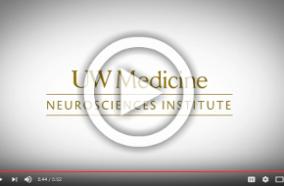2 years 8 months ago
Background. Electrical neuromodulation remains an effective therapy for multiple neurological disorders. One strategy to electrically stimulate nerves utilizes the interference of multiple high frequency waveforms. This technique, known as temporal interference stimulation or interferential current stimulation, has recently gained significant attention as a method to improve the state-of-the-art in neurostimulation in both animal studies and human clinical trials.Objective.Here we report our...
Ryan B Budde
2 years 8 months ago
No abstract
Sean P Murphy
2 years 8 months ago
CONCLUSION: This study found variable adherence to ASPIRE QMs in sICH patients undergoing decompressive craniectomy or endoscopic clot evacuation. The relatively high number of patients excluded from individual ASPIRE metrics is a major limitation.
Abhijit V Lele
2 years 8 months ago
CONCLUSIONS AND RELEVANCE: In this cohort study, patients with previous msTBI displayed increased independence over 5 years; msTBI was also associated with increased mortality. These findings, in combination with the persistently elevated rates of unfavorable outcomes in mTBI vs controls imply that more monitoring and rehabilitation are needed for TBI.
Lindsay D Nelson
2 years 8 months ago
CONCLUSION: Atezolizumab plus PEGPH20 showed limited clinical activity in patients with PDAC and none in patients with GC. The safety of atezolizumab plus PEGPH20 was consistent with each agent's known safety profile. (ClinicalTrials.gov Identifier: NCT03193190 and NCT03281369).
Andrew H Ko
2 years 8 months ago
Best practice guidelines have advanced severe traumatic brain injury (TBI) care; however, there is little that currently informs goals of care decisions and processes despite their importance and frequency. Panelists from the Seattle International severe traumatic Brain Injury Consensus Conference (SIBICC) participated in a survey consisting of 24 questions. Questions queried use of prognostic calculators, variability in and responsibility for goals of care decisions, and acceptability of...
Buse Sarigul
2 years 8 months ago
CONCLUSIONS: General management strategies were similar for both iatrogenic (e.g., spinal deformity, traction, etc.) and traumatic SCIs. Steroids were recommended only for injury after intradural surgery, not after acute traumatic or iatrogenic extradural surgery. Consensus was reached that mean arterial pressure ranges are preferred for blood pressure targets following SCI, with goals between 80 and 90 mm Hg for children at least 6 years of age. Further multicenter study of steroid use...
Travis S CreveCoeur
2 years 8 months ago
In order to better understand the relationship between normal and neoplastic brain, we combined five publicly available large-scale datasets, correcting for batch effects and applying Uniform Manifold Approximation and Projection (UMAP) to RNA-Seq data. We assembled a reference Brain-UMAP including 702 adult gliomas, 802 pediatric tumors and 1409 healthy normal brain samples, which can be utilized to investigate the wealth of information obtained from combining several publicly available...
Sonali Arora
2 years 8 months ago
No abstract
Chris Irwin
2 years 8 months ago
No abstract
Sean P Murphy
2 years 8 months ago
CONCLUSIONS: Among individuals with TBI who report chronic pain, non-Hispanic Blacks may be more vulnerable to difficulties managing pain severity and to interference of pain in activities and mood. Systemic biases experienced by many Black individuals with regard to social determinants of health must be considered in a holistic approach to assessing and treating chronic pain in individuals with TBI.
Angelle M Sander
2 years 8 months ago
Art asks of us some measure of curiosity and then rewards our curiosity with an affirmation of the desire to explore self, others, and the world. A psychiatric-mental health nurse practitioner describes his path into nursing and the nurse practitioner role, informed by and informing his art.
Sean P Murphy
2 years 8 months ago
CONCLUSIONS: Using experiential empathy, an approach to teaching and cultivating empathy in which the participants experience the topic first-hand, we directed medical students to consider their own end-of-life wishes. Upon reflection, many noted this process changed their attitudes and clinical approaches to patients' death. This learning experience could be one meaningful component of a longitudinal and comprehensive curriculum to prepare medical school graduates to help patients plan for and...
Deborah Erlich
2 years 8 months ago
CONCLUSION: The tool will serve as a valuable asset to jail/prison leadership, policymakers, and other stakeholders interested in identifying/estimating the resources and costs associated with alternative MOUD delivery models, from the planning stages through sustainment.
Danielle A Ryan
2 years 8 months ago
CONCLUSIONS AND FUTURE DIRECTIONS: Laser ablation of pilonidal disease is safe and feasible. Patients experienced short recovery time and reported low levels of pain and high levels of satisfaction.
Michael D Williams
2 years 9 months ago
Recent studies have shown the importance of the dynamic tumor microenvironment (TME) in high-grade gliomas (HGGs). In particular, myeloid cells are known to mediate immunosuppression in glioma; however, it is still unclear if myeloid cells play a role in low-grade glioma (LGG) malignant progression. Here, we investigate the cellular heterogeneity of the TME using single-cell RNA sequencing in a murine glioma model that recapitulates the malignant progression of LGG to HGG. LGGs show increased...
Sakthi Rajendran
2 years 9 months ago
CONCLUSION: End-stage HFpEF presents with different clinical profiles with varied upstream causes. This may help provide evidence toward the development of targeted therapies.
Reza Mohebi
2 years 9 months ago
Trauma-exposure and posttraumatic stress symptoms increase risk for opioid-related problems in the context of chronic pain. Yet, there has been little exploration of moderators of the posttraumatic stress-opioid misuse association. Pain-related anxiety, defined as worry about pain and the negative consequences of pain, has shown relations to both posttraumatic stress symptoms and opioid misuse, and it may moderate the association between posttraumatic stress symptoms and opioid misuse, as well...
Andrew H Rogers
2 years 9 months ago
No abstract
Michael Williams
2 years 9 months ago
CONCLUSION: PECF is an advanced endoscopic technique with an initial improvement in operative time that occurred after as few as 8 cases to as many as 28 cases in this series. A second learning curve may occur with additional cases. Patient-reported outcomes improve following surgery, and these outcomes are independent of the surgeon's position on the learning curve. Fluoroscopy use does not change significantly along the learning curve. PECF is a safe and effective technique that current and...
Dean C Perfetti
"university of washington"[affiliation] and neurological surge...: Latest results from PubMed
More posts about UW Neurological Surgery Recent PubMed Publications

